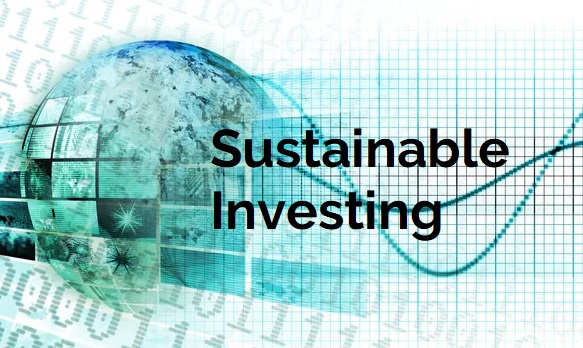Over the years there have been many articles written by several different sources that each presenting a slightly different view as to what the business stages should be. There are numerous lists that speak about the stages of formation, and many others that talk about stages of growth. Still, others might present business stages as they relate to product launch, customer acquisition, or product lifecycle. Each list presents a slightly differing view or labels as to what the business stages actually consist of; especially when it comes to financing.
Funding Acquisition and the Business Stages
At this time, we hope to discuss the differing business stages as they relate to the acquisition of funding. We hope to answer the question that many startups have, of Where do I get funding? Where can your business go in order for it to obtain funding? What is the primary source of funding? and How much funding is typically available at a particular stage?
Many writers, academics, and industry experts have presented their own opinions as to what the true business stages should be. We are not here to debate which stages should be included, and which stages should not. In a broad sense, we are here to discuss the business stages as they relate to financing.
What are the most common business stages relating to financing?
Below is a list of the more commonly recognized business stages as they relate to alternative investments, venture capital, and the private equity industry.
- Start-up
- Seed Stage
- Early Stage
- Growth Stage
- Mezzanine
- Late Stage
- Private Equity
What do these Stages Mean?
Start-up
The highly overused term Start-up has a wide range of definitions and many different interpretations as to what exactly it means. At its most basic definition, Start-up means a newly established business. This stage of business is where the founders have registered the business with a governing institution and in essence, received permission to transact business. This permission is typically granted through a State’s governing office, such as the Comptroller’s Office. The fees at the Start-up Stage are nominal and can range from a few hundred to a couple of thousand dollars depending on the complexity of the filing and operating agreement. True start-up stage funding is either self-funded or through the help of friends and family. It is highly recommended that founders consult a corporate attorney at this stage if they plan to raise capital at a later stage.
Seed Stage
Seed Stage is often considered to be the first stage in venture capital financing. Seed Stage financing usually provides a modest amount of funding that can be dedicated to the early development of a new product or service. This stage mainly enables product development, market research, building a management team, and development of a business plan.
An actual Seed-stage business ordinarily has not yet established commercial operations. An initial seed investment round made by a professional Venture Capital firm typically ranges from $250K-$1MM.
Early Stage
Early Stage financing is usually for companies that have begun their operations, but they may not be at the stage of commercial manufacturing and sales. A company at this stage will generally have a prototype of at least one or more products or services. This stage of business may have its first customer or obtained a very limited amount of early adopters. Most businesses in this stage have been in business for around three years.
Venture Capital financing at this early stage primarily supports an increase in operations, it may even support further IP protection. This level of funding usually provides the business an opportunity to complete the building of the management team and perhaps acquire both human and working capital. The level of funding that is provided by a VC at this stage can range from $500K-$5MM. Some within the VC industry refer to this stage as the First Stage.
Growth Stage
Growth Stage financing perhaps can be one of the broadest defined stages of Venture Capital financing as to the amount of funding and the intended use of funds. The growth stage means that growth has started to accelerate and the company is starting to become an established player.
At this stage, venture capital financing is normally tailored to product expansion or may be tied to the entry into a new market, or even regional expansion. This stage of financing may also be tied to new or expanded facilities, product improvements, and marketing.
There are actually two recognized subset stages that are encompassed within the Growth Stage, these are often times referred to as the Second Stage and Third Stage. The Second Stage primarily focuses upon smaller domestic expansions or growth, and existing product improvements. Where the Third Stage is more tailored towards major expansions such as physical plant expansion, new products, and marketing. Growth Stage financing at its upper range may even be intended for multiple state or international expansion.
The funding range for institutional venture capital investors at the Growth Stage can be rather wide ranging from $1MM-$25MM.
Mezzanine
Mezzanine is the financing step that occurs to bridge the gap between company expansion and having the company file for an initial public offering or IPO.
This stage financing is done often times via debt financing and can range between $5MM-$100MM.
Late Stage
Late Stage is often regarded as capital that is provided after commercial manufacturing and sales have ramped up, but funding that is made available before an IPO. A company’s products or services are in production and are commercially available. The company demonstrates significant revenue growth, but may or may not be showing a profit. Companies that are at this stage have usually been in business for more than three years.
Financing amounts in this Late Stage can range from $5MM-$100MM.
Private Equity
Often this type of financing is used to invest in companies who have achieved very high valuations, or to facilitate leveraged buyouts or LBO, and assist in management takeovers. These institutional investors tend to invest in asset classes consisting of equity securities and debt in companies that are not publicly traded on a stock exchange. Private equity companies may even take a company private, by delisting its publically traded stock from a stock exchange.
Private Equity financing amounts can be quite large and range from $25MM to well over $100MM.
Where do companies obtain investors?
Most businesses when they are first starting rely upon self-funding through a side job, credit cards or personal savings. As the business is formed, and the business idea has really started to take shape, entrepreneurs then tend to rely on outside funds such as friends or family. Early on funding amounts at this stage can range from a few thousand to several hundred thousand depending on availability of funds and the company’s need.
As a business owner, you may have also heard of Angel Investors. Angel investors are individuals that may include friends, relatives, or other successful entrepreneurs. These investors usually provide their own funds in order to assist other entrepreneurs in getting their businesses off the ground. Angel investors usually seek to earn a high rate of return on their investments. The usual range for an Angel Investment is $50K up to $1MM, and in the case of Super Angels or Angel Group Syndicates, investments can range upwards of $5MM or more.
Alongside the Angel Investor community stands a myriad of crowdfunding platforms, commercial banking institutions, government grants and loan programs; each of which may be suitable for funding a business.
A Case for Venture Capital Investment
Most Venture Capital companies require large returns on their investments in order to make the fund’s return worthwhile for their investors. Many firms will only invest if the company can demonstrate an extremely high demand for their products or services and they can show an aptitude for dominating an extremely large market. Likewise, the team needs to show that they are proven with the knowledge and ability to execute. They should show a willingness to be coached, and they know what it takes in order to be successful.
In 2015, approximately $58.8 Billion in Venture Capital was invested across the United States, according to the MoneyTree Report. Entrepreneurs should realize that although Venture Capital is a very important source of financing, this class of investment is not suitable for all businesses.
A recent Forbes article stated that “99.95% of entrepreneurs should stop wasting time seeking venture capital.” Although this percentage sounds harsh, it is a reality that Venture Capital firms in order to achieve fund returns, may only invest in the best of the best.
Does this mean that your business should not seek Venture Capital? Absolutely not. However, this does mean that according to the sources listed in the Forbes article that out of the close to 600,000 companies founded per year, that only a small handful of those companies – to the tune of just a little over 2,000 – were able to show enough promise to obtain venture capital funding. So when you approach our firm or any other venture capital firm for that matter, you had best bring your A-game because chances are you may only get one opportunity to present your pitch deck.





